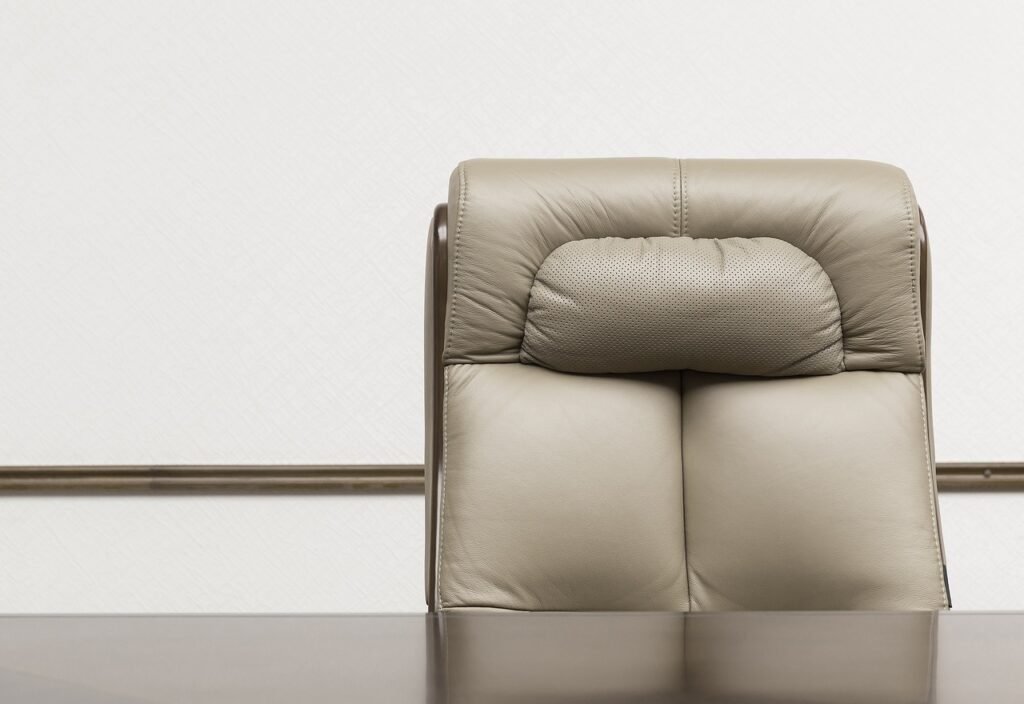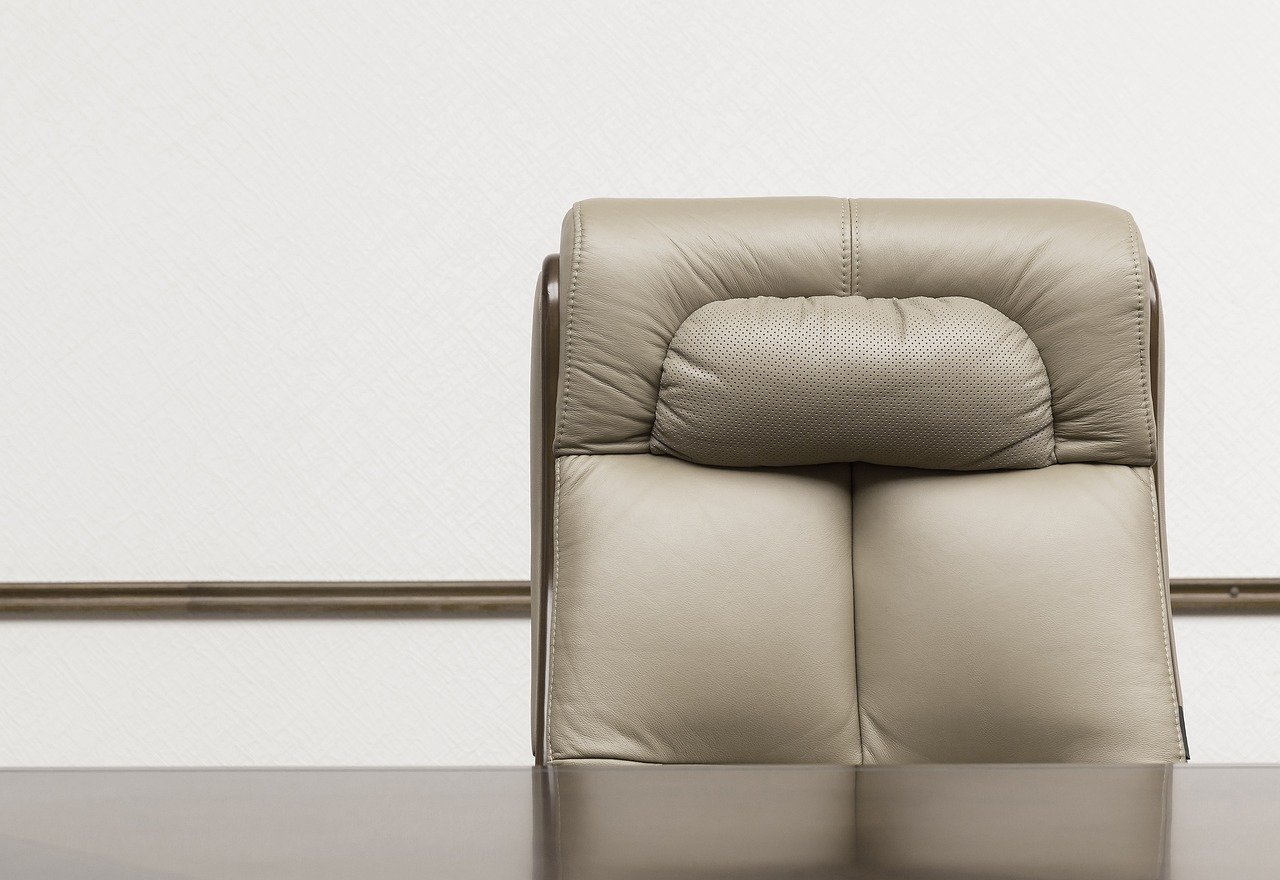Are you tired of sitting in uncomfortable study chairs for hours on end? Look no further, because this ultimate guide is here to help you enhance your comfort level while studying. Whether you’re a student, a remote worker, or simply someone who spends a lot of time at a desk, this article will provide you with useful tips and tricks to transform your study chair into a haven of comfort. From selecting the right chair to making ergonomic adjustments, we’ve got you covered. Get ready to say goodbye to backaches and hello to an enjoyable study experience!

This image is property of pixabay.com.
Choosing the Right Chair
When it comes to selecting the perfect study chair, comfort is of utmost importance. After all, you’ll likely spend many hours sitting in it, studying or working on various tasks. To enhance your comfort, there are several factors to consider when choosing the right chair.
Consider the Ergonomics
Ergonomics refers to the science of designing furniture and equipment for comfort and efficiency. When searching for a study chair, prioritize ergonomics to ensure proper support and reduce the risk of discomfort or long-term health issues.
Look for chairs with adjustable features that allow you to customize the chair to your body and sitting preferences. This includes adjustable seat height, backrest angle, and armrests. Ergonomic chairs are designed to provide optimal support and maintain a neutral posture, promoting a healthier and more comfortable sitting experience.
Opt for Adjustable Features
Adjustable features are essential for tailoring the chair to your specific needs. The ability to adjust the height of your chair ensures that your feet are firmly planted on the ground, promoting proper posture and reducing strain on your back and legs. Additionally, adjustable armrests enable you to find the perfect position for your arms, preventing strain on your shoulders and neck.
Pay Attention to Seat Depth and Width
The seat depth and width of a chair play a significant role in your overall comfort. An ideal study chair should have a seat depth that allows you to sit with your back fully supported by the backrest. It should also have a width that provides ample space for you to sit comfortably without feeling cramped. Consider your body size and preferences when selecting the seat depth and width of your chair to ensure a comfortable fit for extended periods.
Supporting the Back
Supporting your back properly is crucial for maintaining good posture and preventing unnecessary strain. Look for study chairs that offer effective lumbar support and high backrests.
Select Chairs with Lumbar Support
Lumbar support is essential for maintaining the natural curve of your lower back, known as the lumbar spine. Chairs with built-in lumbar support can help alleviate lower back pain and promote a healthy sitting posture. Look for chairs that have adjustable lumbar support, allowing you to position it at the right height and depth for optimal comfort and support.
Consider High Backrests
High backrests provide support not only to your lower back but also to your mid and upper back. They help maintain proper alignment and prevent slouching. When selecting a study chair, consider choosing one with a high backrest that supports your entire back, allowing you to sit comfortably for long periods without straining your spine.
Choose Chairs with Reclining Function
Having the option to recline your chair can be beneficial for relaxation and relieving pressure on your spine. Look for study chairs that offer a reclining function, allowing you to adjust the backrest angle according to your desired level of comfort. This feature can be particularly useful during study breaks or when engaging in activities that require a more relaxed posture.
Cushioning and Padding
The cushioning and padding on a study chair can greatly contribute to your overall comfort. Consider the following features when searching for a chair that offers optimal cushioning and padding.
Look for Memory Foam Cushions
Memory foam cushions provide excellent support and contour to your body, making them a popular choice for study chairs. These cushions mold to your shape, relieving pressure points and promoting proper blood circulation. Look for chairs that offer memory foam cushions, as they can greatly enhance your sitting experience by providing personalized comfort.
Consider Chairs with Leather Upholstery
Chairs with leather upholstery not only add a touch of elegance to your study space but also offer durability and comfort. Leather is a breathable material that helps regulate temperature, keeping you cool in warmer months and cozy in colder weather. Moreover, leather upholstery is known for its softness and ability to conform to your body, providing a comfortable seating surface.
Include Seat Padding in Chair Accessories
If your chosen study chair lacks sufficient padding, it’s possible to enhance its comfort by adding seat cushions or pads. These accessories come in various materials, thicknesses, and designs, allowing you to find the perfect fit for your needs. Seat padding can provide extra cushioning and support where needed, ensuring a more comfortable sitting experience during long study sessions.

This image is property of pixabay.com.
Adjustable Armrests
Armrests play a vital role in reducing strain on your arms, shoulders, and neck. Opt for study chairs that offer adjustable armrests to achieve the most comfortable position for your arms and upper body.
Choose Chairs with Adjustable Armrests
Adjustable armrests allow you to customize the height, width, and angle of the armrests to suit your preferences. This feature is particularly important if you spend long hours at your desk or engage in activities that require frequent use of your arms, such as typing or writing. Adjustable armrests can help prevent discomfort and promote a healthier sitting posture.
Ensure Armrests Align with Desk Height
When adjusting the armrests on your study chair, ensure they align with the height of your desk. This allows your forearms to rest comfortably on the armrests while maintaining a relaxed position. Proper alignment between your desk and armrests reduces strain on your shoulders and neck, allowing for increased comfort during prolonged study sessions.
Height Adjustment
A study chair with height adjustment capabilities is essential to achieve proper posture and optimal comfort. Look for chairs that offer height adjustment mechanisms to cater to your specific needs.
Prefer Chairs with Height Adjustment Mechanism
Height-adjustable chairs allow you to set the chair at a height that suits your body and desk setup. This feature ensures that your feet are firmly planted on the ground, promoting better blood circulation and reducing the risk of leg discomfort or swelling. Adjusting your chair to the correct height also helps maintain a neutral spine position, preventing strain on your back and minimizing the likelihood of developing musculoskeletal issues.
Consider Gas Lift Technology
Some study chairs employ gas lift technology, which makes height adjustments smooth and effortless. Gas lift mechanisms utilize pressurized gas cylinders to raise and lower the chair, ensuring a seamless transition between different seating heights. Chairs with gas lift technology provide convenience and ease of use, allowing you to adjust your chair’s height with minimal effort and interruption.
Swivel Base
A swivel base adds flexibility and convenience to your study chair, allowing you to rotate and reach different areas of your desk without straining your body.
Opt for Chairs with 360-degree Swivel Base
A study chair with a 360-degree swivel base enables you to turn in any direction without having to strain or twist your back. This feature comes in handy when you need to access different areas of your desk, such as reaching for books or materials on your sides. With a swivel base, you can effortlessly pivot and maneuver around your study space, enhancing your overall comfort and productivity.
Ensure Smooth Rotation
When selecting a study chair with a swivel base, consider the quality and smoothness of the rotation mechanism. A chair with a sturdy and well-built swivel base will ensure that you can move around effortlessly without experiencing jerky or uneven movements. Smooth rotation further improves your comfort and eliminates unnecessary strain on your body while switching between tasks or accessing various areas of your desk.
Breathable Materials
Proper airflow and ventilation contribute to your overall comfort while sitting. Study chairs with breathable materials help regulate temperature and prevent excessive sweating.
Select Chairs with Breathable Mesh Backrests
Mesh backrests are known for their excellent breathability and airflow. These chairs allow for increased ventilation, ensuring that heat and moisture are dissipated, keeping you cool and comfortable. The mesh material also provides a flexible and supportive surface, conforming to the contours of your back and enhancing your overall sitting experience.
Choose Upholstery that Allows Airflow
If you prefer chairs with upholstered backrests or seats, opt for materials that allow for efficient airflow. Fabrics with breathable properties allow air to circulate and prevent the buildup of heat and moisture. Look for chairs with upholstery made from breathable materials such as cotton or polyester blends. These fabrics can help maintain a comfortable temperature, reducing the likelihood of discomfort or sweatiness during long study sessions.
Footrests and Leg Support
Providing adequate support and comfort for your legs and feet is crucial for a truly comfortable study chair. Consider the following features to enhance leg comfort during extended sitting periods.
Consider Chairs with Integrated Footrests
Some study chairs feature integrated footrests, allowing you to elevate and support your feet. These footrests provide relief and relaxation for your legs while promoting proper blood circulation. Integrated footrests can be particularly useful during breaks or when engaging in activities that require a more relaxed sitting posture.
Add Leg Rest Accessories
If your chosen study chair lacks a built-in footrest, you can enhance leg support and comfort by adding leg rest accessories. These accessories, such as ottomans or footstools, provide a place for you to elevate and rest your feet. Leg rest accessories can help alleviate leg fatigue and provide a more comfortable sitting position for extended periods.
Proper Lighting and Desk Setup
Creating an environment that supports your study or work activities is essential in maintaining comfort and productivity. Consider the following factors when setting up your study chair and desk.
Ensure Sufficient Lighting
Proper lighting is crucial for reducing eye strain and promoting focus. Ensure that your study chair is positioned in a well-lit area, either near a window for natural light or with the appropriate desk lamp for artificial lighting. Having adequate lighting will not only enhance your visual comfort but also contribute to a more pleasant study environment.
Adjust Desk Height and Position
The height and position of your desk play a significant role in your overall comfort while studying or working. Ensure that your desk height aligns with your chair’s height so that your arms can rest comfortably on the desk while maintaining a relaxed position. Adjust your desk’s position to be within easy reach of your study materials and any necessary equipment. A well-organized and properly aligned desk setup promotes better posture and reduces strain on your body, allowing for increased comfort and productivity.
Regular Breaks and Stretching
Even with the most comfortable study chair, it’s crucial to take regular breaks and engage in desk-friendly stretches to prevent stiffness and maintain overall well-being.
Take Regular Breaks
Sitting for prolonged periods can lead to discomfort and potential health issues. It’s essential to take regular breaks from sitting and engage in light physical activity. Stand up, stretch, or take a short walk every hour to relieve tension in your muscles, promote blood circulation, and refresh your mind. Regular breaks not only prevent discomfort but also enhance focus and productivity when you return to your study or work tasks.
Perform Desk-Friendly Stretches
Incorporate desk-friendly stretches into your routine to alleviate muscle tension and promote flexibility. These stretches can target specific areas of your body that are commonly affected by sitting for long periods, such as your neck, shoulders, back, and legs. Simple stretches like neck rotations, shoulder rolls, seated spinal twists, and leg extensions can be done at your desk and provide immediate relief and rejuvenation. Regular stretching ensures that your body stays limber and comfortable throughout your study sessions.
Enhancing comfort in study chairs requires careful consideration of various factors, such as ergonomics, back support, cushioning, adjustability, and proper desk setup. By choosing a chair that caters to your specific needs and preferences, you can create an optimal and comfortable study environment that promotes better posture, reduces strain, and enhances your overall well-being. Remember to prioritize comfort, take regular breaks, and engage in desk-friendly stretches to maintain a healthy and enjoyable study experience.
